Important preliminary remark
In the end, these are only specially selected games, but I had chosen them exemplarily from more than 20 titles and the pre-tests with few cards, because the result in the end was almost exactly the same as with the full scope. The weighting between the titles with pure raytracing without DXR and with DXR was done in a ratio of 6:4, with the four DXR titles coming out very differently. Full ray tracing fun in Cyberpunk 2077, combined with more medium-weight effects like in Metro Exodus EE and the hybrid implementation of lighting to Marvel’s Guardians of the Galaxy and Shadow of the Tomb Raider, where ray tracing really only comes into play humanely.
DXR is being implemented in more and more games, and the current engines almost all allow for it by now. From this point of view, it would be just as unfair to completely forego it as it would be to exclusively use such titles with DXR. Since every user has different preferences and some prefer to do without DXR completely (why actually?), I’ll accommodate all target groups a bit. To say it upfront: without DXR, the Radeon RX 7800XT could gain around 4 percentage points especially in WQHD, the RX 7700XT between 3 and 4 percentage points.
The tested Radeon RX 6750XT is unfortunately the only factory-overclocked board partner card, which makes the comparison a bit more difficult, but AMD unfortunately did not sample this card and nothing else could be found. I summarized all the single benchmarks in galleries, because transparency is a must, also concerning all the interesting metrics. I tested two cards from each new model. On the one hand the Radeon RX 7800XT MBA 16GB from AMD and the Sapphire Radeon RX 7700XT Pulse 12 GB as the cheaper models and on the other hand with the XFX Radeon RX 7800XT MERC(ury) Speedster 16GB as well as the XFX RX 7700XT QICK(silver) 12 GB real OC cards, whereby the “OC” is rather limited to the power limit and the more massive cooler. By the way, the cooler is important because it also explains the higher clock rate with slightly lower power consumption of the latter card.
In Full-HD, we still notice the influence of the CPU limitation in pure rasterization, but it is definitely already significant. The Radeon RX 7800XT MBA is almost 3 percentage points ahead of the old RX 6800XT here, the XFX RX 7800XT Merc even 4 percentage points. This is then about 3 percentage points behind the old RX 6900XT and about 4 percentage points behind the GeForce RTX 4070 FE, which would, however, only be about as fast in pure raster performance. The two Radeon RX 7700XT push themselves between the GeForce RTX 3070 Ti and the RX 6750XT, which sees no more land.
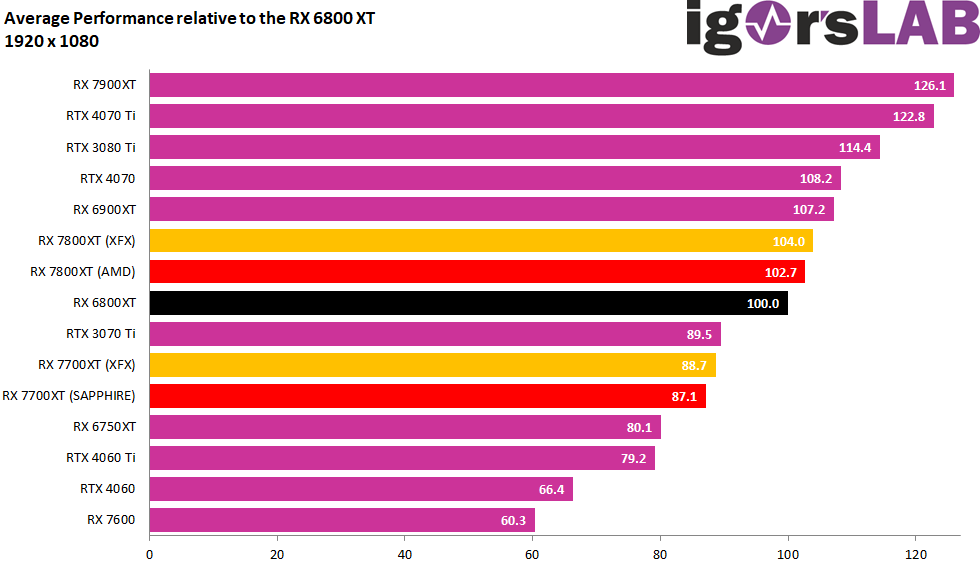 Let’s now look at the Min-FPS, i.e. the one percent of the slowest rendered frames (P1 Low). Here, the Radeon RX 7800XT is similarly well in the running, whereby the overclocked variant can even just beat the RTX 4070.
Let’s now look at the Min-FPS, i.e. the one percent of the slowest rendered frames (P1 Low). Here, the Radeon RX 7800XT is similarly well in the running, whereby the overclocked variant can even just beat the RTX 4070.
Even though I will have a very detailed chapter on power consumption and load peaks later (be sure to read it!), I also logged the power consumption over every benchmark for this gaming selection and also cumulated it at the end, so that a very clear picture already emerges here. Even the crowbar version of the RX 7800XT from XFX is still a bit more frugal than the RX 6800XT, although it is significantly faster. Well, it’s more of an evolution, not a revolution, but the gap is filling.
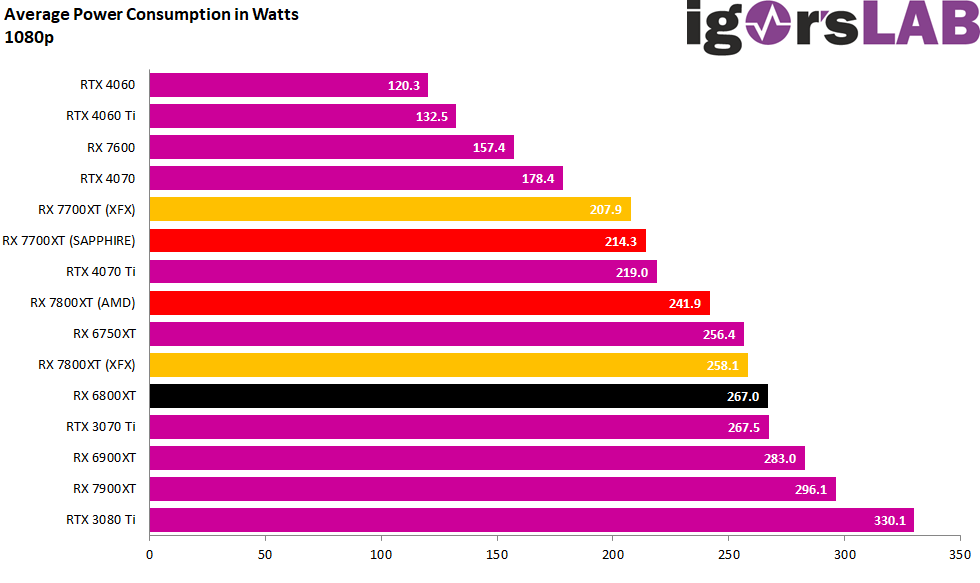 If you now look at the resulting efficiency, you can see the difference between AMD and NVIDIA even more clearly. Yes, the old generation is beaten in efficiency, but it is not as great as announced as an average. However, it is interesting that the Sapphire card drifts a bit.
If you now look at the resulting efficiency, you can see the difference between AMD and NVIDIA even more clearly. Yes, the old generation is beaten in efficiency, but it is not as great as announced as an average. However, it is interesting that the Sapphire card drifts a bit.
- 1 - Introduction and overview of Navi32
- 2 - The cards from AMD, Sapphire and XFX at a glance
- 3 - Test system and the igor'sLAB MIFCOM-PC
- 4 - Teardown: PCB and components
- 5 - Teardown: Cooler and surprising material analysis
- 6 - Gaming-Performance in Full-HD (1920 x 1080)
- 7 - Detailed Metrics for Full-HD (1920 x 1080)
- 8 - Gaming-Performance in WQHD (2560 x 1440)
- 9 - Detailed Metrics for WQHD (2560 x 1440)
- 10 - Details: Power consumption and load balancing
- 11 - Load peaks, capping and PSU recommendation
- 12 - Temperatures, clock rates and infrared analysis
- 13 - Fan curves and operating noise
- 14 - Summary and conclusion















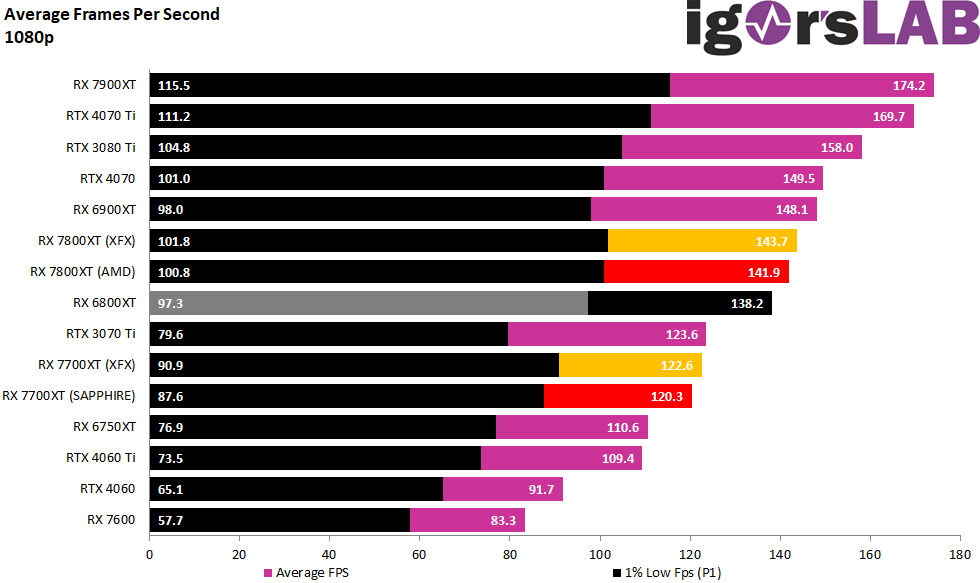
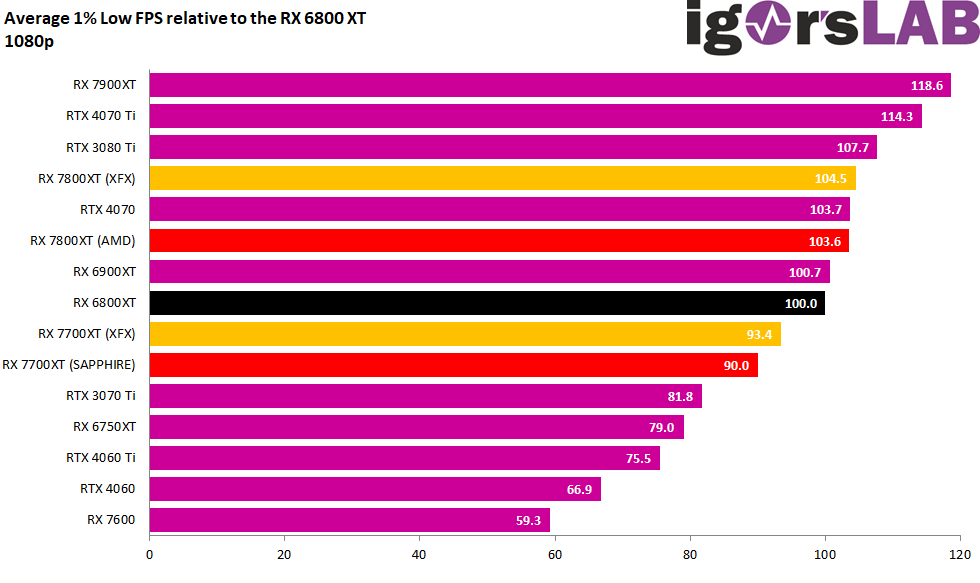
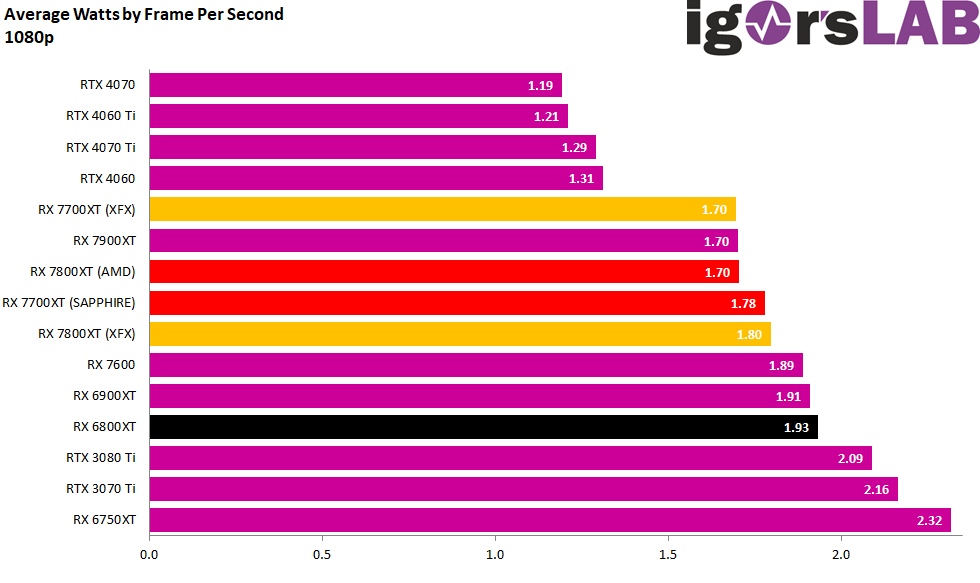













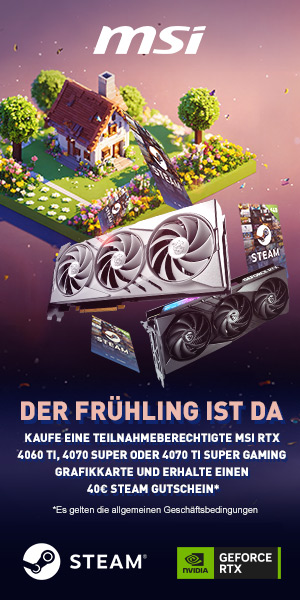




167 Antworten
Kommentar
Lade neue Kommentare
Urgestein
1
Urgestein
Urgestein
Urgestein
Mitglied
Urgestein
1
Mitglied
Veteran
Urgestein
Veteran
Veteran
Mitglied
Urgestein
Veteran
Veteran
Urgestein
Alle Kommentare lesen unter igor´sLAB Community →